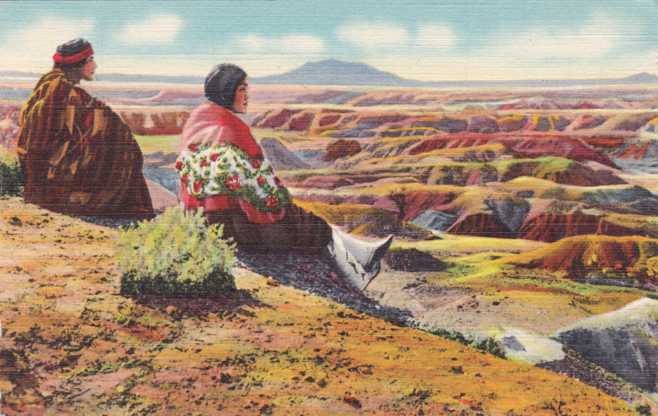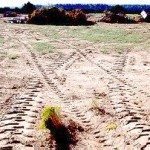A good deal of the propaganda spread by Navajo resisters living on Hopi land bemoans alleged harassment by BIA and Hopi police who impound the resisters’ livestock. They would have the public believe that livestock confiscation is part of a greater conspiracy between the Federal and Hopi governments to move Navajo families from Hopi land in order to free up the land for coal mining – the logic being that leaving the resisters with too few sheep for subsistence will force them to move elsewhere.
While the Hopi continue to insist on the eviction of any Navajo families who did not sign an Accommodation Agreement and who have so far refused to move off Hopi land on their own accord, these evictions have nothing to do with coal mining. The Hopi have no need or desire to resort to the devious tactics implied by the resisters to move them off Hopi land – the law has already made it abundantly clear that they have no right to remain on Hopi land.
Yes, resisters are subject to livestock impoundment, but contrary to their assertions it is not aimed solely at them. All ranchers living on Hopi land, both Navajo and Hopi, are subject to livestock impoundment if they do not have a grazing permit or they have more animals than they are permitted under sustainable land management practices. What the resisters always fail to point out is that it is their continual disobedience of these permitting requirements that results in their animals being impounded.
Permitting is not a devious means of ensuring that Navajo resisters cannot keep enough sheep to maintain their subsistence lifestyle. It is an absolute necessity on the Hopi Reservation because it is the only means of protecting this fragile high-desert environment. Permitting of livestock serves to balance the number of grazing animals with what the land can support; it is also the most equitable means of dividing between a large group of people the number of animals the land can support.
The number of permitted animal units (1 animal unit = 1 cow or four sheep) is determined by calculating a stocking rate for each range unit on the Reservation. Factors such as range conditions, the availability of water, presence of wildlife, available infrastructure such as fences and watering points, and rainfall are all evaluated to establish the stocking rate. In turn, the number of available animal units is divided among all the ranchers within a range unit. This is nothing more than application of basic supply and demand. When the supply of available rangeland is less than the demand for that land, a shortage exists. Hence the demands of all range users go unmet to a certain extent as valuable range resources are apportioned as far as they will stretch without harming the land. These are the economic facts of life that confront all economies – whether they are Navajo subsistence economies or not.
Navajo families who sign an Accommodation Agreement with the Hopi Tribe are guaranteed Hopi grazing permits for the same proportion of animals as Hopi ranchers. Until their eviction, the BIA will continue to recognize the validity under law of the permits it has previously issued to Navajo resisters and families awaiting relocation. Any increase or decrease in the available number of animal units, as dictated by natural range conditions, affects both Hopi and Navajo families equally, and both Hopi and BIA permittees equally. Additionally, all livestock owners are subject to the conditions of the permits, and regular monitoring takes place across the Hopi Reservation to ensure that all ranchers are adhering to the requirements of their permits. It is this regular and necessary monitoring that the resisters label “continued police harassment.”
Although in some circumstances permitted animal units may be below subsistence levels, if the land is to be allowed to recover and sustain long-term human use, grazing fewer animals is the only solution. Because of drought, all ranchers on the Hopi Reservation, both Hopi and Navajo, have faced reduced animal unit allocations over the past few years. The resisters’ claims that they are being singled out and targeted for reductions are misinformation in some cases and outright lies in others.
By willfully grazing sheep far in excess of their permitted animal units or without any permit at all, the resisters are contradicting their own platform of land stewardship and destroying the land upon which they claim to rely for survival. The resisters are also doing a great disservice to fellow Navajo who signed Accommodation Agreements, since the negative environmental impacts of the resisters’ lawlessness extend beyond their immediate areas. Also party to this environmental destruction are outsiders who donate funds to the resisters for the purpose of retrieving impounded livestock and purchasing forage. Since only excess or non-permitted animals are impounded, providing funds for their retrieval encourages abuse of a system designed to protect the land. Similarly, donating funds to purchase hay enables the resisters to maintain more animals than the land can support.
The resisters are far from being victims of a conspiracy seeking to destroy their way of life. Grazing permits are tools that promote the very land stewardship touted by the resisters and if they genuinely respect Mother Earth they would wholeheartedly and voluntarily support permitting.





